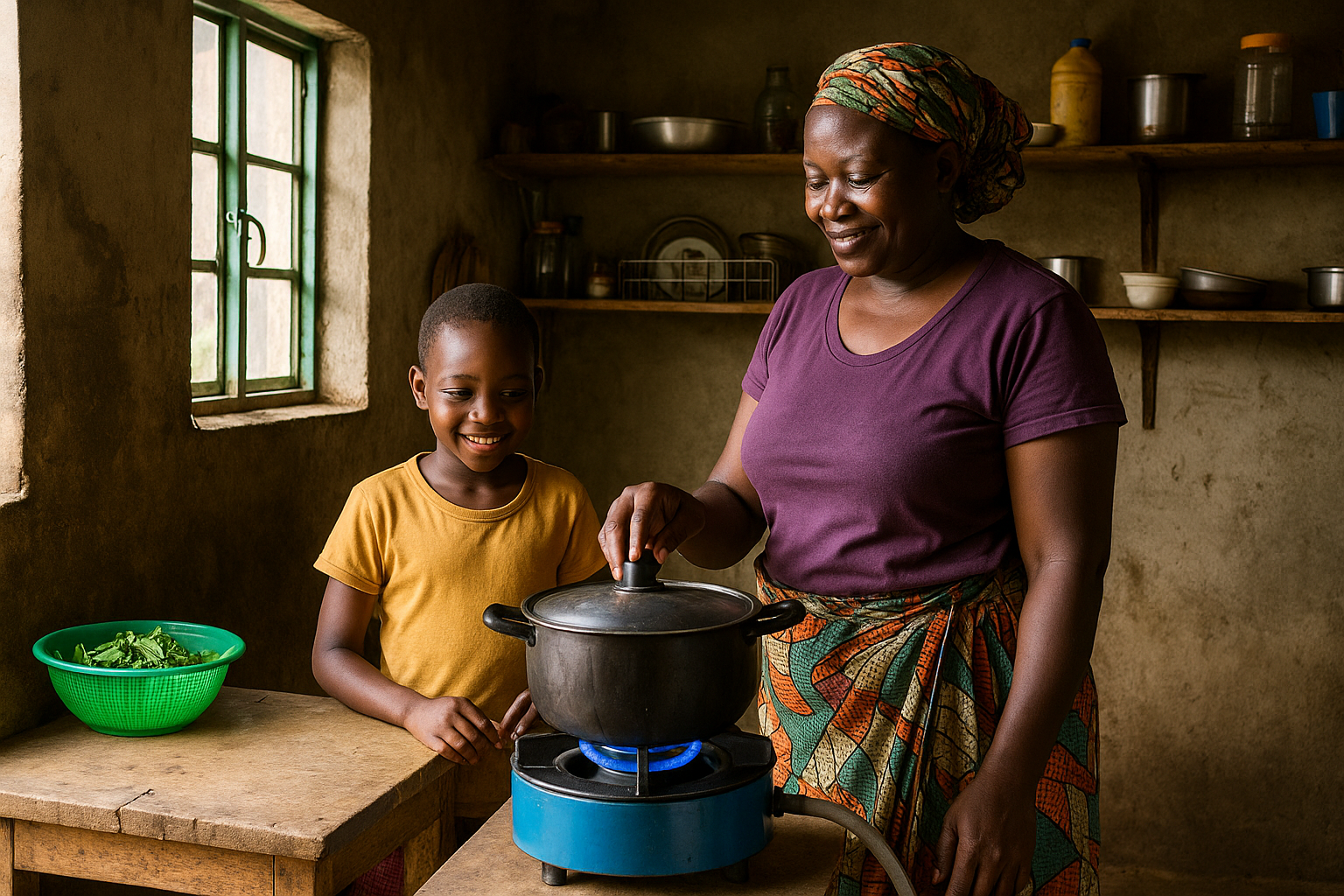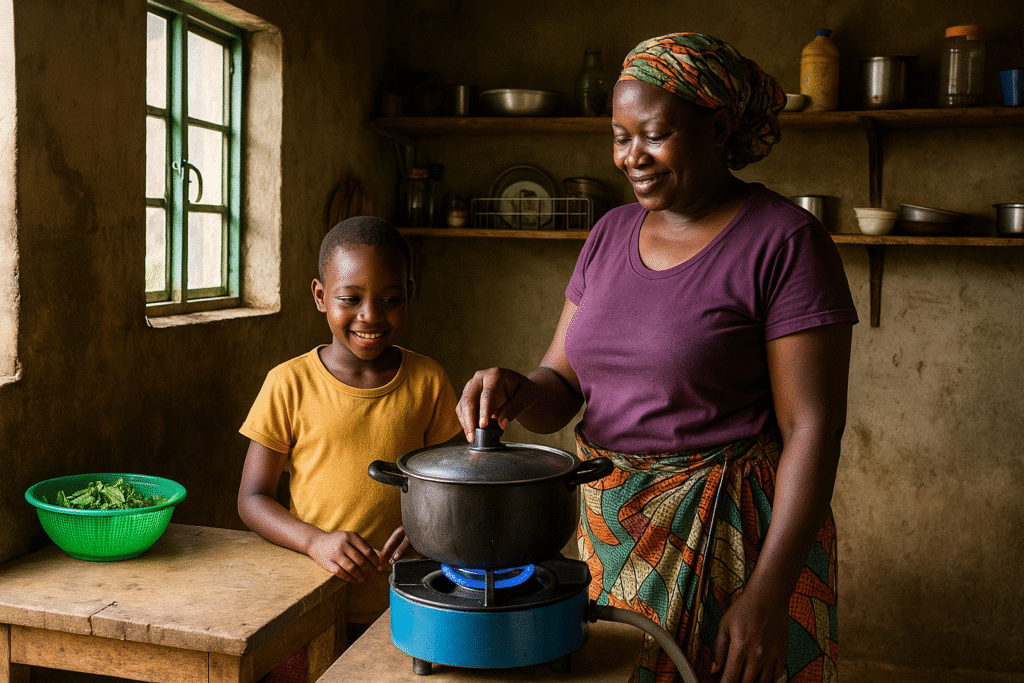Kibwezi is a region where fuel scarcity, high costs, and health challenges converge. Imagine kitchens filled with choking smoke from firewood and charcoal, women’s eyes watering every time they cook, children coughing through the night. Some families spend thousands of shillings every month just buying charcoal or LPG, money that could otherwise go toward school fees or seeds. At the same time, dairy cows generate daily manure which often lies unused—leaking nutrients, creating odor, and inviting disease vectors.
Challenge Before Intervention
A typical household in Kibwezi struggled with:
Fuel costs that kept rising, cutting into household budgets.
Smoke-related health issues—especially among women and young children.
Time lost collecting firewood, often several hours per week.
Under-performance in farming: soils declining in fertility; livestock fodder needing expensive external inputs.
Biogas Installation & Support
CIDES Green stepped in when a family reached out seeking relief. They conducted a thorough needs assessment including:
Livestock and manure assessment: Enough cow dung to support a 6m³ digester.
Energy needs survey: Daily cooking, occasional heating, and pumping water.
Site evaluation: Adequate space, proximity to kitchen, safety.
Then, CIDES designed a fixed-dome masonry biogas system suited to local conditions, connected pipelines to the kitchen, and trained household members in:
Feeding the digester daily (proper dung-to-water ratio)
Monitoring gas flow and pressure
Safe use of biogas stove and piping
Leveraging bioslurry (the nutrient-rich by-product) on fields and fodder
Implementation Process
Week 1: Groundbreaking, excavation, and foundation laid.
Week 2: Construction of dome and chambers, piping.
Week 3: Installation of biogas stove, system testing.
Week 4: Training and commissioning.
CIDES provided technical oversight, quality assurance, and ensured safety protocols were followed.
Results & Measurable Impact
Fuel Cost Reduction: Household saved up to 70% of previous monthly fuel expenses. What was spent on charcoal/LPG dropped significantly.
Health Improvement: Indoor air quality improved dramatically; reports of respiratory issues declined.
Time Saved: Hours previously spent gathering fuel redirected toward farming, family, or income-generating tasks.
Agricultural Gains: Fields fertilized with bioslurry saw maize yields increase by ~30%; fodder crops improved, milk productivity rose.
Environmental Impact: Less firewood usage contributes to forest conservation; reduced greenhouse gas emissions from open manure pits and burning charcoal.
There was a moment when the mother lit the biogas stove for the first time—no smoke, just a clean flame. It was more than cooking; it felt like reclaiming dignity. Neighbors came over, curious. Children stopped coughing. The family felt empowered—they had turned what was once waste (manure) into energy, into fertilizer, into savings and health.
Message to Investors & Donors
This kind of biogas project delivers triple win returns: social (health, time), environmental (emissions reduction, forest protection), economic (cost savings, improved farm output). It scales too—once one household demonstrates success, others follow. The model shows viability, replicability, and measurable impact


